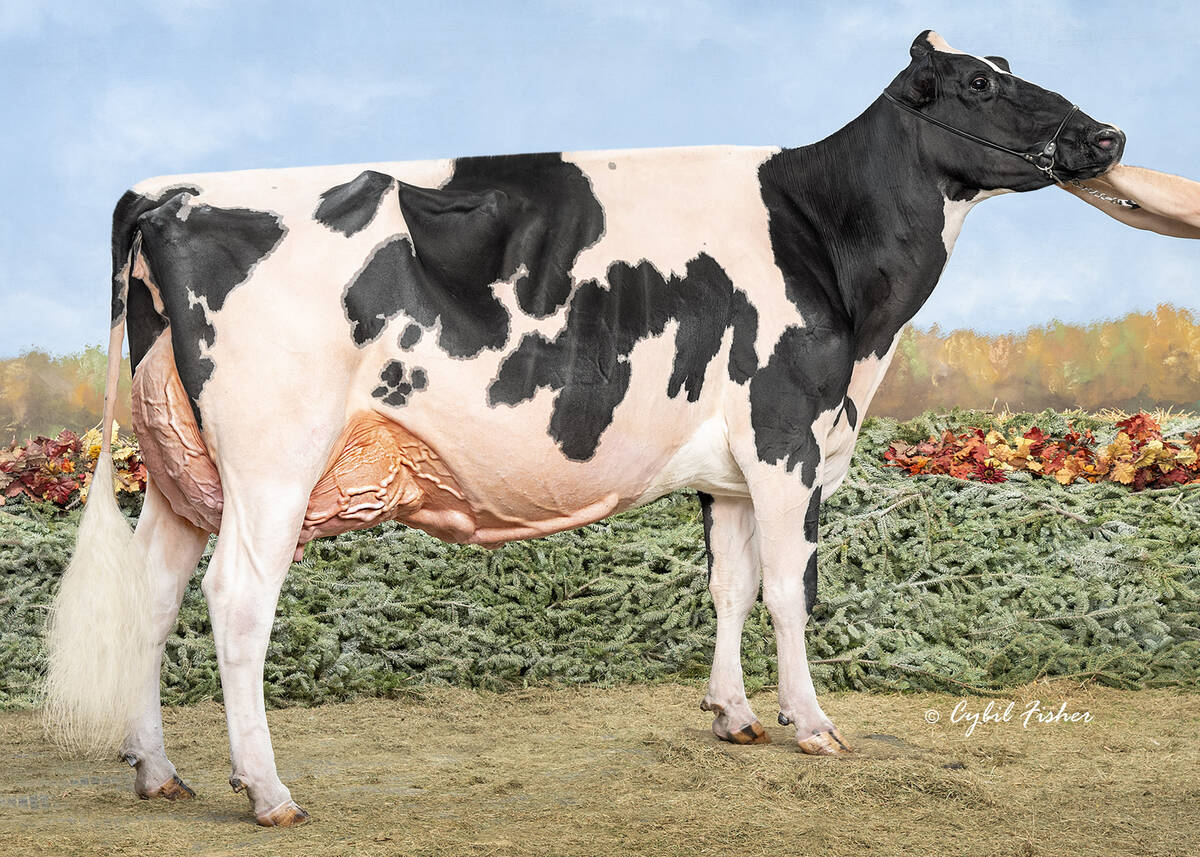GOODLANDS, Man. – Whether too little moisture or too much, there seem to be few happy mediums in the southern prairies.
Grant Maddess was forced to choose between cultivator and sprayer when his pea crop thrust itself from the parched soil in mid June.
“I didn’t know whether to spray for weeds or just plow it down. I chose to keep the crop but we’ll be harvesting now in a few days. It’s a week early and it’s nothing to write home about,” said the Deloraine, Man. farmer.
Read Also

Saskatchewan dairy farm breeds international champion
A Saskatchewan bred cow made history at the 2025 World Dairy Expo in Madison, Wisconsin, when she was named grand champion in the five-year-old Holstein class.
Maddess and his nearest neighbors have reason to feel bitter about crop conditions. Since May 1, they’ve received only a few inches of rain. In nearby Boissevain, which they can almost see from their farm a few kilometres away, there are crop disease problems due to more than 228 millimetres (nine inches) of rain this season.
“There is considerable disease in wheat and pulse crops in one town and right next door they have had more than 70 crop insurance claims for drought, ” said Scott Day, of Manitoba Agriculture.
“Those they have already plowed under. An irony many would soon rather forget – to make matters worse, last weekend there was a hailstorm that damaged only the best crop areas in the district.”
Judy Morningstar, of Goodlands, is watching her canola.
“We waited to seed our canola until we just couldn’t wait any longer. The crop is growing but it is very late and the stand and the germination are both weak,” she said about the family’s crop seeded June 14.
Dry conditions are the norm across most of the prairies, according to provincial district agrologists. The Red River Valley reports drought stress problems after being flooded earlier this year.
Dreams dashed
In Saskatchewan one of the typically driest areas of the province is the southwest. Good winter snowcover and timely spring rains brought healthy crops and healthy expectations from producers. But those hopes may be short-lived.
“If we don’t get some rain soon, there will be problems for the later seeded crops as the plants made such a strong start and are now in need of moisture to fill and it just hasn’t come. It would be a real disappointment if we don’t get some moisture soon,” said Sandra Stanger, of Saskatchewan Agriculture in Shaunovan, Sask.
Southern Alberta is also reporting drought and heat stress south of a line running along the Trans-Canada Highway. Second cuts of hay are not expected, say agriculture officials in that region.
Late seeded oilseeds in the Taber and Medicine Hat areas are ripening ahead of schedule. Around Vulcan and Claresholm, lygus bugs are eating the best canola crops.














